The Unsinkable Bass Bait
Category: article
Nov 16th, 2021 by Keith Worrall
Modified Nov 16th, 2021 at 8:19 PM

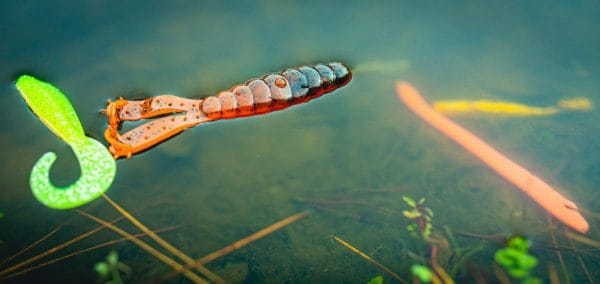

The Unsinkable Bass Bait
Conservation dilemmas and a perfect soft plastics solution
Ladson, SC – (November 16, 2021) – Early one morning, strolling the banks of his private Texas bass lake and pitching a favorite soft plastic bait, Murray Stacy encountered a disquieting sight. “Washed up on shore I came upon the emaciated form of an absolute monster largemouth bass,” said Stacy, owner of Big Hill Ranch. “The fish measured 26-inches long and was still fresh enough that it hadn’t been scavenged by turtles.”
The goliath bass, as Stacy would eventually realize, represented the first of at least a dozen big largemouths found dead on his lakeshore that season. “When I cut the fish open to examine her stomach, I found two bloated chunks of soft plastic baits, which seemed to be blocking the bass’ digestive tract. It was shocking because I’d been told the fish were simply dying of old age.”
Due to advanced decomposition, Stacy wasn’t able to check all the dead bass found in his lake that season. “But when I examined the stomachs of two other big bass that had expired, both contained portions of swollen plastics. That’s when it hit me: These fish were seeing discarded plastics sitting on the bottom and ingesting them, despite the fact our lake’s forage situation was really healthy.”
Recognizing the damage to his lake and pondering the same potential threat to public waters, Stacy sought an alternative type of soft plastic bait. “After I discovered the bass ingestion problem on my lake, I immediately banned the use of all soft plastics there,” he admits. “I hated to do it because the baits were so productive. But losing my trophy fish in that way was so easily avoidable that it became an easy call—at least until I discovered a better bait alternative.”
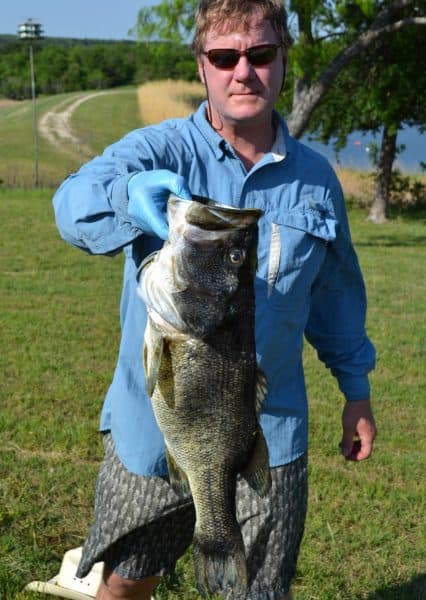
One of over a dozen big bass found dead on the banks of Murray Stacy’s Texas bass lake.
Softbait Solution
Several years later, a friend suggested Stacy try a promising softbait substitute. “He told me to check out a few of these ElaZtech® baits by Z-Man, which were purportedly composed of a buoyant, durable, non-toxic material.
“Right off, casting a Z-Man swimbait, I was astonished I could fish an entire day—and catch dozens of bass—with the same, single ElaZtech bait,” recalls Stacy. “Unlike the traditional PVC (polyvinylchloride) based plastics we’d been fishing, which sunk to the bottom and became un-retrievable when they eventually tore and fell off the hook, the ElaZtech baits floated, resisted tearing and stayed attached to the hook.”
When the water level dropped 6-feet in Stacy’s lake that year, he started noticing numerous discarded plastic baits sitting on the bottom. “Most of them had swelled up two to three times their normal size, explaining the problems the baits presented when swallowed by bass,” he observed. “It further cemented the importance of ElaZtech, which doesn’t swell up in water. And because the baits float, they’re easy to retrieve and properly dispose of. All of which helps us grow bigger, healthier bass today.
“In a day’s fishing, I used to easily go through a dozen or more soft plastic baits—and some of them would fall off and sink to the bottom where they might stay for a long, long time. Meanwhile, we still haven’t lost a single ElaZtech bait in the lake.”
Though Stacy admits he can’t prove his bass’ cause of death, he strongly suspects ingestion of swelled soft plastics and the fishes’ inability to properly digest them. “If it’s happening in my fishery, it’s happening everywhere,” he exclaims.
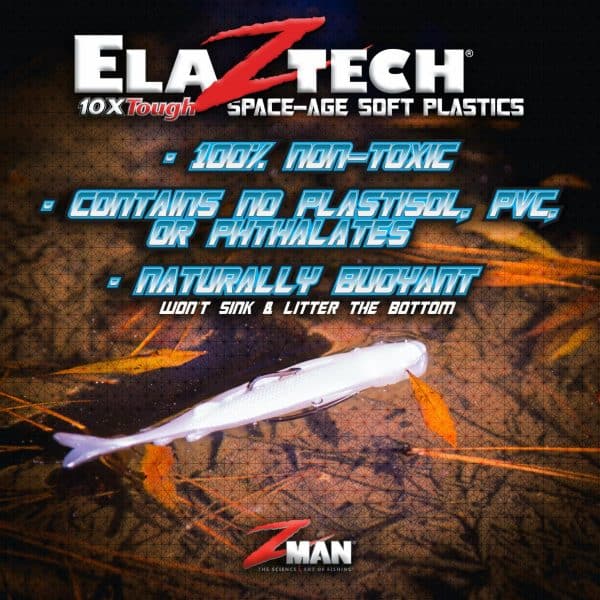
Soft Plastics Science
Recognizing the looming issue of discarded soft plastics baits in water bodies, biologists have over the past decade initiated several studies to comprehend the scope of the dilemma. The U.S. Fish & Wildlife Service has estimated that as many as 20 million pounds of soft plastic lures (SPLs) enter surface waters each year, and that 10 to 12 tons of them are lost or discarded.
“We don’t think people are discarding them intentionally,” said University of Illinois researcher Cory Suski, who conducted a cooperative study with Canada’s Carlton University in 2014. “The baits just drop off the hook or half of it rips off and sinks to the bottom where it can’t be easily retrieved.”
To evaluate change in SPL size and decomposition, researchers immersed eight different types of PVC-based SPLs in water at 39- and 70-degrees Fahrenheit for a period of two years. After just four months, in 70-degree water, the PVC baits had grown 10-percent in length. After two years in the warmer water, SPLs were 50-percent longer and 30-percent wider (i.e. a 6-inch bait swelled to 9-inches.) Coldwater immersed baits had grown by 25-percent. Similarly, the weight of SPLs more than doubled after just 7 months in water.
The authors note that, by far, the most discarded SPLs are stickbaits, particularly those impaled on a single hook, wacky-rig style. “This method of rigging a SPL is among the least effective at retaining the bait because they’re easily lost during the fight or when smaller or non-target fish pull the bait off the hook,” says the report. “Unfortunately, due to the nature of their composition, they are a source of plastic litter in aquatic systems, where thousands of SPLs may be deposited in each lake, each year.”
image001.jpg
Chunks of swollen soft plastic baits, found the intestines of a dead bass.
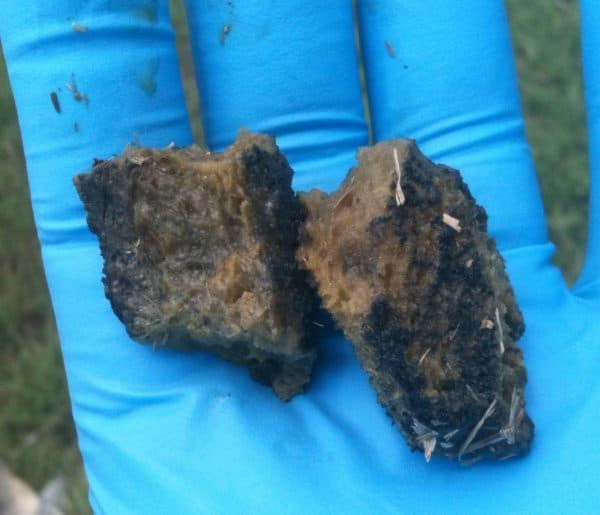
Unsinkable ElaZtech
To date, no studies have specifically addressed the toxicity of PVC baits to fish. Within most PVC baits, however, are stabilizers and softening agents known as phthalates. The EPA lists certain phthalates as toxic substances with links to a variety of health problems, including organ and reproductive harm in humans. Moreover, the U.S. Geological Survey has determined that phthalates remain the single most prominent contaminant in ground and surface waters; yet the relative role of fishing plastics within this larger category remains unknown.
“In part because it looked like PVC might be on its way out, particularly in single-use and food packaging applications, we sought alternative bait materials from day-one,” notes Jolee Myers, Operations Manager at Z-Man Fishing. “We’ve always drawn motivation from the idea of creating a bait from an environmentally benign substance that also outperformed traditional PVC baits in the water.
“We worked for three years to finally develop a workable material and the right machines and processing with which to make our ElaZtech baits. The great part about working with such a unique, unusual material is that it allows us to constantly innovate new formulas and ways to improve on the fishability of the baits.
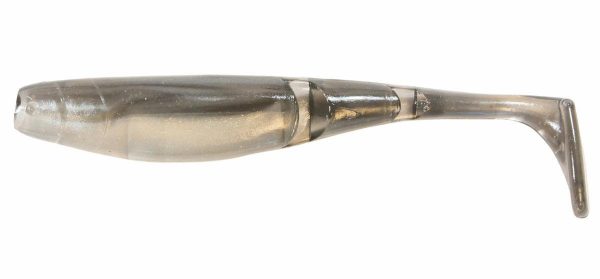
Stacy’s new-favorite big bass bait, a buoyany and lively Z-Man Scented PaddlerZ™.
“By maintaining our USA based operations, we can also control and perfect every aspect of bait making, from changing the baits’ softness and buoyancy to adding scent or fine-tuning colors to the exact specifications required by anglers.”
For Z-Man president Daniel Nussbaum, producing environmentally safe softbaits distills down to common sense. “ElaZtech baits are 100-percent non-toxic and contain no PVC, plastisol or phthalates,” Nussbaum affirms. “The material is considerably tougher than traditional PVC, so an angler can catch more fish before throwing the bait away.”
“The primary problem with PVC baits is what happens once a fish ingests them, which balloon in size, cause intestinal blockage and which can eventually lead to the death of the fish. Regardless of what you’re casting, the lesson is to dispose of your used plastic baits in a trash can, not the lake.”
Stacy adds a compelling final word: “Though I suspect we’ll see significant blowback from fans of traditional soft plastics, I believe mine is a story worth repeating. If you apply what happened on my fishery to a national or global scale, you understand the potential number of soft plastic baits sitting on lake bottoms, potentially ingested by fish and eventually killing some percentage of them. Seems like a shame when the perfect solution is already at our fingertips.”
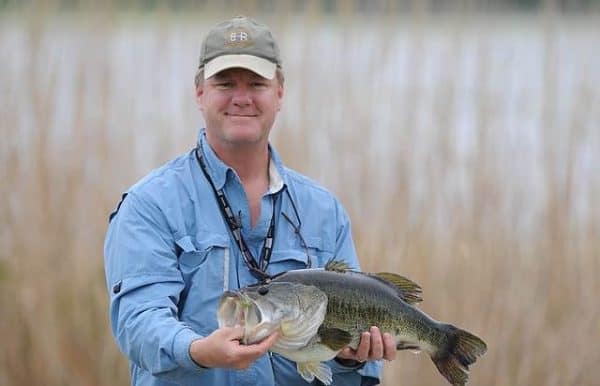
Murray Stacy grips-n-grins one of his lake’s now-healthy largemouth bass.